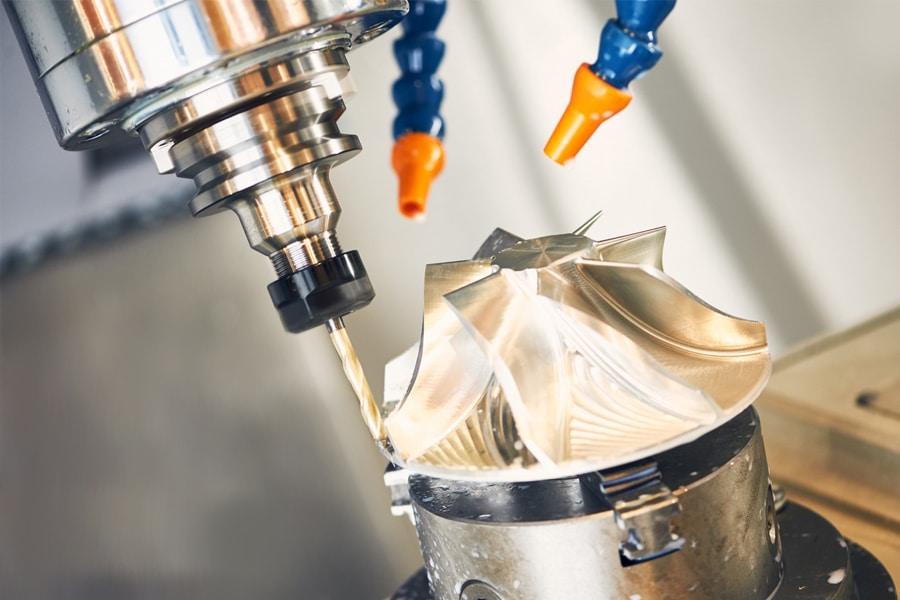China has long been known for its cost competitiveness in manufacturing, including CNC machining services. The country’s extensive manufacturing infrastructure, skilled workforce, and economies of scale have contributed to its ability to offer cost-effective CNC machining solutions. However, it’s important to note that cost competitiveness can vary based on several factors:
- Labor Costs: While China’s labor costs have historically been lower than those in many Western countries, they have been gradually rising due to increased wages and improvements in labor standards. Nevertheless, labor costs in China can still be relatively lower compared to some other regions.
- Infrastructure and Overhead: China’s well-developed manufacturing infrastructure and supply chain networks contribute to cost competitiveness. The availability of raw materials, transportation options, and established industrial clusters can help reduce costs.
- Economies of Scale: China’s large manufacturing volume allows for economies of scale, which can lower production costs. Mass production of CNC machined parts can lead to cost savings per unit.
- Technological Advancements: China has made significant investments in technology and automation, which can improve production efficiency and reduce labor requirements, thereby impacting overall costs.
- Competition: The presence of a competitive manufacturing ecosystem in China can lead to competitive pricing among CNC machining service providers. This competition can be advantageous for customers seeking cost-effective solutions.
- Regulations and Taxes: Local regulations, taxes, and import/export duties can influence the overall cost structure of CNC machining services in China. It’s important to be aware of these factors when assessing cost competitiveness.
- Quality and Skill Level: While cost is a significant factor, it’s important to consider the quality and skill level of the CNC machining services provided. Cheaper options might not always guarantee the desired level of quality and precision.
- Currency Exchange Rates: Currency exchange rates can impact the cost competitiveness of CNC machining services for international clients. Fluctuations in exchange rates can affect the final cost.
When evaluating the cost competitiveness of CNC machining services in China, it’s essential to consider not only the initial price but also the overall value proposition. This includes factors such as quality, lead times, communication, technical support, and the ability to accommodate customization and changes in specifications.
Working with a reputable CNC machining partner in China that offers a balance between cost competitiveness and quality can help ensure a successful and cost-effective manufacturing process. Regular communication, clear specifications, and a collaborative approach are key to achieving the desired results while managing costs effectively.
How to save cost of CNC Machining
Saving costs in CNC machining involves a combination of strategic decisions, process optimization, and efficient practices. Here are several strategies to help you save costs in CNC machining:
- Design Optimization: Start with a well-optimized design that minimizes complexity and material waste. Simplify geometries, reduce the number of intricate features, and use standard tool sizes to avoid unnecessary tool changes.
- Material Selection: Choose materials wisely based on your project requirements. Opt for readily available and cost-effective materials that meet your functional needs, avoiding excessive use of exotic or expensive materials.
- Tolerances and Specifications: Specify tolerances and surface finishes that are suitable for your application. Tighter tolerances and finer finishes generally require more time and precision, leading to higher costs.
- Batch Production: If possible, batch similar parts together. CNC machining benefits from economies of scale, and producing multiple parts in a single setup can reduce overall machining time and setup costs.
- Standardization: Standardize components or features across different parts to simplify tooling and setups. This can lead to reduced machining time and setup costs.
- Tool Selection: Optimize tool selection for efficiency and cost-effectiveness. High-performance tooling might have a higher upfront cost but can lead to faster machining times and longer tool life.
- Reduce Tool Changes: Minimize the number of tool changes during machining by using multi-axis machines, tool changers, and tool holders with multiple inserts.
- Machine Utilization: Maximize machine utilization by scheduling jobs effectively. Reduce idle time between setups and ensure machines are running as efficiently as possible.
- Nesting and Layout: Optimize part nesting and layout on the raw material to minimize material waste. Software tools can help arrange parts efficiently, reducing material costs.
- Programming Efficiency: Efficient CNC programming can significantly impact machining time. Utilize CAM (Computer-Aided Manufacturing) software to generate toolpaths that minimize unnecessary movements and tool changes.
- Avoid Overcuts: Overcuts occur when toolpaths extend beyond the required geometry. Minimize overcuts to reduce machining time and material waste.
- Process Automation: Implement automation solutions like robotic loading/unloading and pallet systems to reduce labor costs and increase machine uptime.
- Supplier Relationships: Develop strong relationships with your CNC machining suppliers. Long-term partnerships can lead to better pricing and collaboration for cost-saving ideas.
- Continuous Improvement: Regularly review and analyze your machining processes for potential improvements. Identify bottlenecks, inefficiencies, and areas for optimization.
- Waste Management: Properly manage coolant, chips, and waste material. Recycling and reusing coolant and efficiently managing chips can contribute to cost savings.
- Quality Control: Invest in robust quality control processes to reduce the risk of rework and scrap, which can increase overall costs.
Remember that while cost savings are important, maintaining quality, precision, and reliability should also be top priorities. Finding the right balance between cost reduction and meeting your project requirements is key to successful CNC machining operations.

